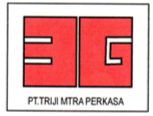“We’re essentially solving two issues at once,” mentioned David Mitlin, a professor within the Cockrell School of Engineering’s Walker Department of Mechanical Engineering and Applied Research Laboratory who designed the brand new material. “Typically, the quicker you charge, the extra of these dendrites you grow. So in case you suppress dendrite progress, you possibly can charge and discharge faster, because all of a sudden it’s secure.”
“This material can also be thrilling because the sodium steel anode theoretically has the very best vitality density of any sodium anode,” Henkelman said.
The new anode material, called sodium antimony telluride intermetallic — Na metal composite (NST-Na), is made by rolling a skinny sheet of sodium metallic onto an antimony telluride powder, folding it over on itself, and repeating many instances.
“Think of making a type of layered pastry, like spanakopita,” Mitlin said.
This course of leads to a very uniform distribution of sodium atoms that makes it less likely to type dendrites or surface corrosion than current sodium steel anodes. That makes the battery extra stable and allows faster charging, lithium battery pack comparable to a lithium polymer battery pack-ion battery’s cost charge. If you cherished this informative article along with you would want to get more information about rechargeable battery – visit this web page link, generously stop by our web-site. It additionally has the next energy capacity than current sodium-ion batteries.
“In our calculations, this composite binds sodium a little bit extra strongly than sodium binds itself, which is the best case for having the sodium atoms come down and evenly unfold out on the floor and stop these instabilities from forming,” Henkelman stated.
The study’s two lead authors Yixian Wang and Hui Dong — current and former graduate college students in Mitlin’s lab respectively — fabricated the material. Colleagues at Los Alamos National Laboratory led by John Watt characterized its properties. The research’s different authors are Hongchang Hao, Pengcheng Liu and Naman Katyal of UT Austin.
